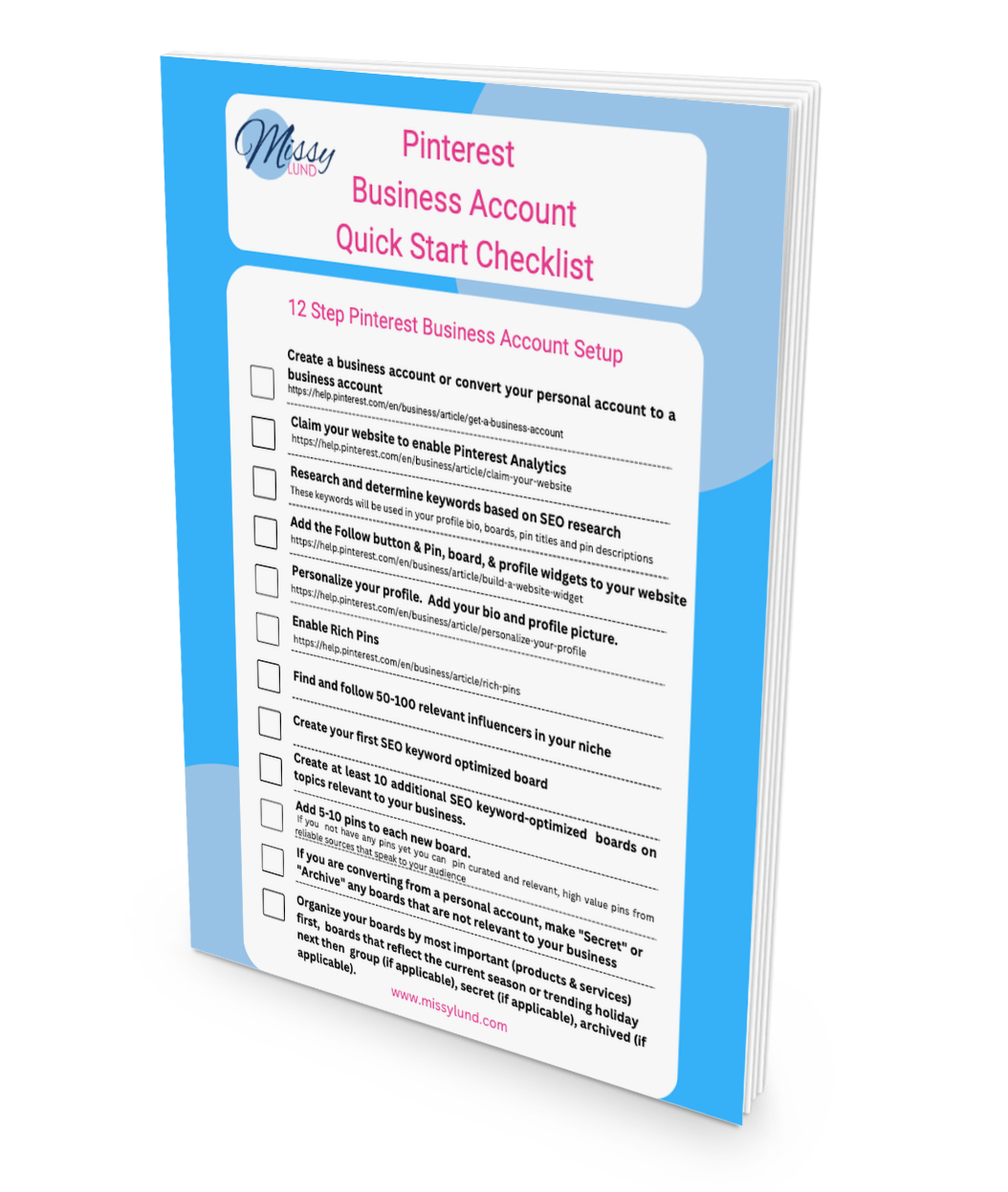Are you frustrated with the lack of traffic to your Pinterest account? Struggling to catch the attention of potential followers and achieve the success you desire?
Driving traffic to your Pinterest account can feel like a daunting task. With over 459 million active users globally, it’s crucial to stand out from the crowd and attract the right audience. That’s where the balance between organic and paid traffic comes into play.
Both organic and paid traffic are key aspects of any digital marketing strategy. Understanding the difference between the two and knowing when to prioritize one over the other can be critical to your online success.
Through the course of this article, we’ll uncover the true power of organic traffic, its benefits, and the long-term advantages it can bring to your Pinterest account.
We’ll also shed light on paid traffic, unveiling its potential to instantly boost your visibility and reach. By the end, you’ll have a good understanding of the pros and cons of both strategies and be equipped to make an informed decision for your business and Pinterest account.
So, whether you’re a Pinterest novice or a seasoned pro, join us as we take a look at the pros and cons of organic and paid traffic so you’ll have all the tools you need to implement a well-planned traffic strategy that allows you to witness greater engagement, success, and growth on Pinterest. Let’s dive in!
Understanding Organic Traffic
Organic traffic refers to the visitors that land on your website as a result of unpaid search results. These visitors find your website after using a search engine like Pinterest, but not clicking on a paid advertisement to get there. Organic traffic is often considered as the most valuable traffic, not because it’s free, but because these people are actively searching for something that you offer. This implies that they are more likely to convert or become loyal customers.
Exploring the Benefits of Organic Traffic
1) Long-Term Sustainability
Unlike paid traffic that requires consistent investment, organic traffic has the advantage of being sustainable over the long run. By optimizing your website and content for search engines, you can rank higher in search results organically, leading to a consistent flow of visitors without ongoing costs.
2) Higher Credibility and Trust
When users discover your website or content through organic search results, they tend to view it as more credible and trustworthy. This is because organic rankings are based on relevance and quality, indicating to users that your website is a reputable source of information.
3) Cost-Effective
While paid traffic can deliver immediate results, it comes at a cost. On the other hand, organic traffic can be obtained without any direct expenses. By investing time and effort in creating high-quality content and optimizing for search engines, you can attract organic traffic without spending a considerable amount of money.
4) Targeted Audience
Organic traffic allows you to reach a highly targeted audience. By optimizing your Pinterest account, website and content for specific keywords related to your business or niche, you can attract visitors who are actively searching for the products or services you offer. This results in higher conversion rates and better ROI (Return on Investment).
5) Sustainable Growth
Building a solid foundation of organic traffic can lead to sustainable growth for your business. As your organic rankings improve, your Pinterest account and website gains more visibility, leading to increased brand awareness and a larger audience. Over time, this can translate into a steady stream of qualified leads and consistent growth for your business.
Understanding Paid Traffic
Paid traffic refers to the visitors that land on your website as a result of paid advertising efforts. This typically includes tactics like pay-per-click (PPC) advertising, display advertising, or Pinterest (or other social media) ads. The main benefit of paid traffic is that it can get you immediate results. You can target specific demographics, locations, and even behaviors to ensure your ads are being seen by your target audience. However, the downside is that it can get expensive, especially if you are in a competitive industry or if you don’t manage your campaigns effectively.
Paid traffic, when used strategically, has the power to propel your business forward in ways that organic traffic alone may not achieve. While organic traffic focuses on building a solid foundation and sustainable growth, paid traffic can provide a more immediate boost to your online presence and help you reach a highly targeted audience.
Exploring the Benefits of Paid Traffic
1) Quick Results
One of the key advantages of paid traffic is its ability to generate quick results. With paid advertising you have the opportunity to put your content in front of potential customers almost instantly. This means that you can start driving traffic to your website or Pinterest account right away, without having to wait for your organic rankings to improve.
2) Targeting Capabilities
Another benefit of paid traffic is its unparalleled targeting capabilities. With organic traffic, you rely on search engines to determine who sees your content based on keywords and relevance. However, with paid traffic, you have the ability to target specific demographics, interests, and behaviors, ensuring that your content reaches the right people at the right time. This level of precision can significantly increase the chances of converting visitors into customers.
3) Control and Flexibility
Paid traffic offers a higher degree of control and flexibility. With organic traffic, you are subject to the algorithms and ranking criteria of search engines, which can sometimes be unpredictable. On the other hand, paid traffic allows you to set your own budget, choose the duration of your campaigns, and make real-time adjustments based on performance data. This level of control gives you the ability to optimize your campaigns and maximize your return on investment.
Making and Informed Decision
While the advantages of both organic and paid traffic are clear, making a decision between the two requires careful consideration. To ensure you are maximizing the effectiveness of your marketing efforts, it is important to weigh the pros and cons of each strategy.
One key factor to consider is the immediate impact of paid traffic. Paid campaigns can generate quick results, allowing you to rapidly increase your Pinterest and website traffic and reach a larger audience. This can be especially beneficial for businesses looking to drive sales, launch a new product, or promote limited-time offers. However, it is crucial to recognize that this immediate impact may not be sustainable in the long term.
On the other hand, organic traffic focuses on building a solid foundation by creating valuable, high-quality content that resonates with your target audience. By optimizing your website for Pinterest and search engines and utilizing social media channels, you can attract organic traffic that is more likely to convert into customers. While organic traffic may take longer to build and see results, it has the potential to provide more sustainable growth over time.
Additionally, paid traffic can complement your organic strategies by providing valuable data and insights. By analyzing the performance metrics of your paid campaigns, such as click-through rates and conversion rates, you can gain a deeper understanding of your target audience and refine your organic content accordingly. This data-driven approach can help you make informed decisions and continuously improve your overall marketing strategy.
Organic Traffic vs. Paid Traffic: Which is Better?
So, which is better: organic traffic or paid traffic? The answer depends on your business goals and budget. If you’re looking for long-term, sustainable growth, then organic traffic might be the best route. It takes time to build up organic traffic, but the benefits can be worth the wait.
On the other hand, if you need immediate results or if you’re launching a new product, paid traffic could be a more effective route. While it can be more expensive, the ability to target specific audiences can make it incredibly effective.
Conclusion
In conclusion, both organic and paid traffic have their own benefits and drawbacks. As you navigate the world of traffic generation, it is important to remember that there is no one-size-fits-all solution. Every business is unique, and what works for one may not work for another.
For a balanced and effective digital marketing strategy, it’s best to utilize a mix of both. The ratio, however, can vary depending on your specific business needs and goals. Therefore, it is crucial to assess your business goals, available resources, and target audience to determine the most effective mix of organic and paid traffic for your specific circumstances.


